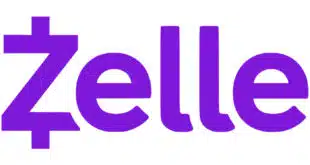Take into consideration that, in today’s global e-marketplace, credit cards alone are no longer enough.
Getting consumers to part with their money online these days requires careful thought about checkout-page design and payment options, says Paul Bridgewater.
Paul Bridgewater is vice president of world payments for Digital River Inc., Eden Prairie, Minn.
Consumers remain skittish. Despite recent positive economic signs, the latest Gallup U.S. consumer spending report shows that routine daily expenditures at restaurants, gas stations, and online stores are still down from their 2008 highs, falling to $58 per day in January 2011 versus $97 for the same month three years earlier.
What does this mean for online retailers? You need to work smarter and harder to structure your online environment to not only compete for business but maximize sales. And one of the most underrated components in your online arsenal is your payments program. A well-executed payments strategy can turn what is traditionally seen as a cost center into a revenue driver. But to do so, you need to understand your customer better than ever before and mindfully manage your customer’s payment experience.
So where do you start? At a place often overlooked from a marketing perspective: your checkout process. Without the right configuration, payment options, and purchase best practices in your checkout, you risk frustrating your shopper and increasing the possibility of purchase abandonment.
Global Reach
Research shows, for example, that 30% of all shoppers abandon their purchases due to confusing and overcrowded checkout pages. That can get even worse when consumers’ chosen and trusted payment options are unavailable. Mind you, these are shoppers who are willing and ready to buy. Imagine what you could add to your bottom line if you optimized your purchase process and captured even half of those shoppers.
One of the key checkout principles to live by is to keep it simple. Bear in mind, during the checkout process your customer is no longer shopping. Don’t clutter the process with upsells, bundles, popups and redirects. Make the journey to the buy button as short, smooth and clean as possible.
To optimize your checkout flow, it’s best to use a combination of common sense, best practices, and metric-based testing. A/B testing is good for broad, sweeping changes; multivariate testing (MVT) is more appropriate where you’re seeking to identify trends among various consumer segments or when granular insights are important. Dynamic personalization allows you to leverage your MVT learnings by creating targeted promotions or customized experiences for specific traffic segments.
You can apply the same keep-it-simple strategy to your payment options. When considering what payment options to include in your checkout, keep in mind that a maximum of four payment options is recommended. Your decision on which options to include should take into account:
– Your Product. Is it a digital or physical product, and how is it going to be fulfilled? Downloaded digital products, for example, will not benefit from a delayed payment method;
– Your Price Point. Price points affect the payment methods shoppers will use. No one wants to pay for a $5 item with an American Express card or wire transfer;
– Geography. Consider where your consumer is located and offer the preferred payment options that are available to them in that region. In Brazil, a consumer is likely to use Boleto Bancario to complete a purchase rather than a credit card; a Japanese shopper, by contrast, will use Kombini, which requires her to take a bar code on the thank-you page to her local 7-Eleven convenience store and pay Yen over the counter;
– Your Consumer Demographic. Make sure you are offering relevant payment options for the demographic you are selling to. For example, teenage and twenty-something shoppers are more likely to use PayPal than older customers who prefer credit cards.
When thinking about what payment options to offer at checkout, you need to take into consideration that, in today’s global e-marketplace, credit cards alone are no longer enough. This is especially true if you want to be successful selling internationally. Today’s global merchant must think in broader terms. The Asia-Pacific region favors alternative payment options that are often only relevant and useable in specific countries, as opposed to more internationally accepted and recognized brands like PayPal and bank transfers.
Cash on delivery is popular in China and India. Many Europeans use online banking as a form of transferring payments (most bank transfers require re-directing the consumer during checkout, a process Europeans are comfortable with, but Americans will often resist). When you plan ahead and optimize for cross-border traffic, the end result is broader global reach, better conversion rates, and lower cart abandonment.
Simple Changes
Many merchants wrestle with the return they’ll receive on their investment by offering regional payment options. Is it worth the cost to establish the necessary relationships with cross-border acquiring partners? In most cases, the answer is yes. U.S. payment processors adopt a different risk profile when processing overseas transactions, resulting in higher decline rates and higher transaction costs. In countries such as Brazil, decline rates reach upward of 40% when only U.S. processors are used. At the same time, a large portion of the cards in Brazil are limited to domestic use only. In short, if you want to attract the local domestic population, you must offer the locally expected payment options.
As with your payment-options strategy, simplicity is key in the physical design of your checkout. Research indicates that condensing the checkout process to one step—not presenting a separate shopping-cart page—increases the average revenue per visit by more than 13%. Businesses can also see revenue lift when they use dynamic payment-option presentation, a technique that displays the payment options based on the customer’s payment preferences from prior purchases. Location, price points on products selected for purchase, and other demographics all play a part in determining which options are presented.
So how does your checkout process stack up against these payments- program essentials? Is it designed to sell? Is it leading your customers to the buy button or to abandon the sale? Some simple, but mindful, changes can have a major impact on your bottom line.





